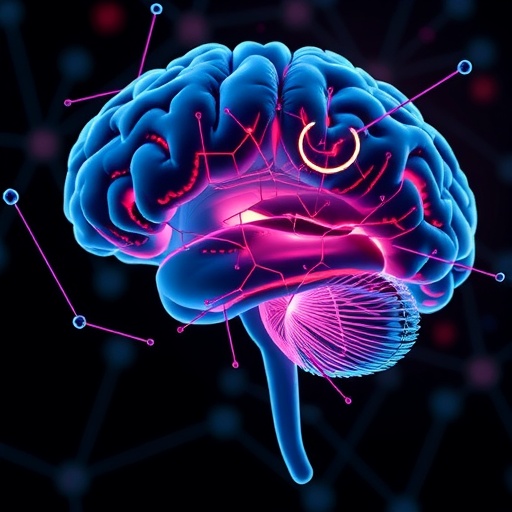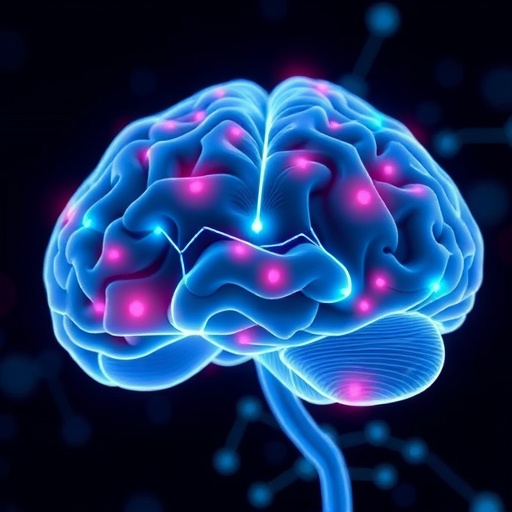In a groundbreaking study published in Nature, researchers from Harvard Medical School have unveiled lithium deficiency in the brain as a pivotal and previously unrecognized factor contributing to the onset and progression of Alzheimer’s disease. This discovery not only sheds new light on the molecular underpinnings of one of the most devastating neurodegenerative disorders but also introduces a potentially transformative therapeutic avenue targeting early brain lithium levels to stall or even reverse cognitive decline. For over a decade, scientists have puzzled over why Alzheimer’s disease manifests with its characteristic protein aggregates — amyloid beta plaques and neurofibrillary tangles composed of tau protein — yet fails to present uniformly among individuals with these hallmark pathologies. Lithium’s crucial role in maintaining brain integrity offers a compelling explanation.
The study demonstrates for the first time that lithium is naturally present in the human brain at physiologically significant levels. More importantly, this trace metal diminishes markedly early in Alzheimer’s disease progression. Lithium’s neuroprotective properties appear multifaceted, sustaining the normal function of neurons and glial cells while mitigating pathological cascades that lead to synaptic loss, neuroinflammation, and cognitive impairment. The researchers integrated advanced mass spectrometry techniques to accurately quantify lithium alongside other metals in postmortem brain samples, spanning cognitively healthy individuals to those experiencing severe dementia. This comprehensive approach confirmed that among approximately 30 metals studied, lithium distinctly decreases at the initial stages of cognitive decline.
Mechanistic investigations in genetically engineered mouse models of Alzheimer’s disease recapitulated the human findings, revealing that dietary lithium restriction accelerates pathological features synonymous with Alzheimer’s, including amyloid-beta accumulation and tau pathology. Intriguingly, lithium depletion activated brain immune cells, microglia, in ways that impaired their ability to clear amyloid deposits — a known contributor to disease progression. Lithium-deficient mice also displayed exacerbated synapse and axon loss alongside widespread myelin degradation, cellular events that collectively derail neural circuitry essential for memory and cognition.
.adsslot_taBoVNGOnw{width:728px !important;height:90px !important;}
@media(max-width:1199px){ .adsslot_taBoVNGOnw{width:468px !important;height:60px !important;}
}
@media(max-width:767px){ .adsslot_taBoVNGOnw{width:320px !important;height:50px !important;}
}
ADVERTISEMENT
One of the most compelling aspects of the research is the elucidation of how pathological amyloid beta plaques perturb lithium homeostasis. Lithium ions are sequestered by amyloid aggregates, effectively reducing their bioavailability and diminishing lithium’s normal physiological roles. This sequestration explains not only the depletion observed but also why previous attempts to treat Alzheimer’s with high doses of standard lithium salts, such as lithium carbonate, yielded limited success and toxicity concerns: common lithium formulations can be trapped by plaques before exerting neuroprotective effects.
To circumvent this challenge, the research team developed and screened a new class of lithium-based compounds designed to evade amyloid binding. Lithium orotate emerged as a leading candidate, effectively restoring lithium levels in the brain without being captured by amyloid beta. Remarkably, oral administration of lithium orotate at doses much lower than those used clinically for psychiatric conditions reversed Alzheimer’s pathology and rescued memory function in aged mice. The compound’s efficacy at such low dosage levels significantly minimizes toxicity risks and holds promise for safe, long-term therapeutic use.
At the molecular level, lithium influenced gene expression networks linked to Alzheimer’s risk, including the well-studied APOE gene — a major genetic determinant in disease susceptibility. This genomic modulation points to lithium’s broad regulatory capacity, suggesting it supports brain resilience not just by counteracting known pathological proteins but by maintaining homeostatic gene expression critical to neural health.
The translational implications of these findings are profound. Current clinical strategies that target amyloid beta alone have failed to halt or reverse cognitive decline sufficiently. Lithium-based treatment introduces a broader neuroprotective strategy aimed at preserving overall brain function and cellular health. Furthermore, routine lithium level screening through blood tests could pave the way for earlier diagnosis and stratification of patients who may benefit most from lithium supplementation or novel lithium derivatives.
Cautious optimism permeates the research community, with the senior author, Dr. Bruce Yankner, emphasizing that clinical validation is vital before widespread adoption. Nonetheless, he notes that the extensive neuroprotective effects observed in murine models, coupled with the identification of amyloid-evading lithium compounds, mark a paradigm shift in Alzheimer’s research. Importantly, long-term administration of lithium orotate in mice did not produce toxicity, contrasting sharply with the often adverse effects reported using traditional lithium therapies.
The study also interfaces with epidemiological observations that regions with higher environmental lithium exposure through drinking water tend to have lower dementia prevalence, thereby reinforcing a biological basis for lithium’s protective role. This blend of observational data, human postmortem analyses, and mechanistic animal studies provides an unprecedented multidimensional picture of lithium’s essentiality in brain aging and neurodegeneration.
While questions remain—such as optimal dosing, long-term safety in humans, and whether lithium therapy can truly reverse advanced disease—the research charts a promising course for novel interventions targeting early pathophysiological changes before overt clinical decline. This work represents a major stepping stone toward slowing, preventing, or potentially reversing Alzheimer’s disease by addressing a previously neglected but critical element: lithium homeostasis.
The discovery also broadens our understanding of Alzheimer’s heterogeneity, explicating why diverse outcomes occur among individuals with similar neuropathology. Variability in brain lithium levels and handling could underlie differential resistance or vulnerability, offering a personalized medicine perspective to future therapeutics.
Subject of Research: Human tissue samples
Article Title: Lithium deficiency and the onset of Alzheimer’s disease
News Publication Date: 6-Aug-2025
Web References:
https://www.nature.com/articles/s41586-025-09335-x
https://alz-journals.onlinelibrary.wiley.com/doi/10.1002/alz.12694
https://yankner.hms.harvard.edu/
https://www.rushu.rush.edu/research-rush-university/departmental-research/rush-alzheimers-disease-center
References:
Yankner et al., Nature, 2025, DOI: 10.1038/s41586-025-09335-x
Image Credits: Yankner Lab
Keywords: Alzheimer disease, Neurodegenerative diseases, Dementia, Genetics, Human genetics, Older adults, Aging populations, Cognitive disorders, Mouse models, Brain tissue, Human health, Diseases and disorders
Tags: advanced mass spectrometry in neuroscienceamyloid beta plaques and tau proteinbrain integrity and cognitive declineearly detection of Alzheimer’s diseaseHarvard Medical School research on Alzheimer’slithium deficiency and Alzheimer’s diseasemolecular underpinnings of Alzheimer’s diseaseneuroinflammation and synaptic lossneuroprotective properties of lithiumrole of trace metals in neurodegenerationtherapeutic avenues for Alzheimer’s treatmenttransformative treatments for neurodegenerative disorders





